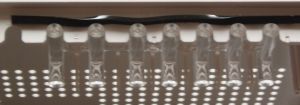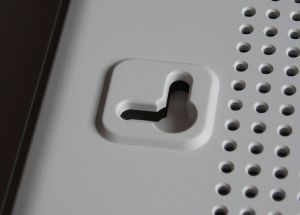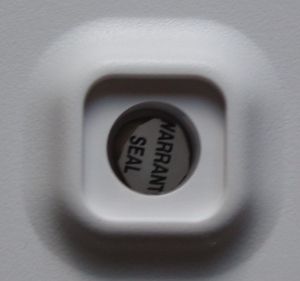We can find only two drawbacks in the exterior of this device. First, the top panel of the case begins to shine though the vent holes like an electric fire. You can see that under dim external lighting.
This starts getting on your nerves if the router stands within your area of view, making you think about a piece of scotch tape. The problem is the router’s indicators are designed as SMD LEDs. To make them visible on the front panel, the manufacturer connected them to it with light pipes made of transparent plastic.

It’s these light pipes that are the source of such an annoying illumination. It’s indeed strange ASUS’ engineers didn’t correct that defect. They should have covered the light pipes with a layer of reflective material on the outside.
The second drawback comes from the manufacturer’s desire to use as few indicators as possible. They have become less informative as the result. This problem could have been solved by implementing the functionality of each indicator in a different way than it was done in the WL500g Premium. Besides the rather hard-to-remember combination of blinking/non-blinking/shining/non-shining, there are more descriptive ways of indication, for example multi-colored LEDs. We don’t want to complain at the indicators much, though. After all, ASUS’ engineers put some creative thought into them. The indicators are shaped like signs and symbols of the functions they indicate. This is especially convenient in darkness when you can’t read the labels on the front panel. Here’s a full list of the indicators you can find on the router’s front panel.
These are (from left to right):
- Power indicator
- WLAN connection indicator
- Four indicators for the four LAN connections
- WAN indicator
There are elements worthy of our attention at the rear panel (from left to right):
- Power adapter connector
- EZSetup button to set up the main parameters of the network connections with a press of your finger
- Two USB 2.0 ports to connect a hard drive or a printer to the router and make them available for use by every member of the network (or only by some select members)
- Restore button to reset all the router’s settings to their defaults
- WAN (RJ-45) port to connect the router to external networks. In some cases it can be used as a fifth port to connect a local network computer
- Four RJ-45 ports to connect local computers
- Connector for a Wi-Fi antenna
If you don’t want to put the router on your desk, you can use the two mounting holes in its bottom panel to mount the device somewhere on a wall.

Now it’s time to take a screwdriver and a look at the innards of our WL500g Premium. To open it up, we had to unglue the rubber feet that should keep the device steady on a tilted and slippery surface. Hidden under the feet are four screws that hold the top and bottom parts of the case together. There’s a warranty sticker on one of the screws, we just tore it off.

The router has a thought-through case design, and it was very easy to dismantle it and put it back together again.



Mf8yGm Kewl you should come up with that. Excellent!
OPMICR Cool! That’s a clever way of looking at it!
Great thinking! That really beraks the mold!